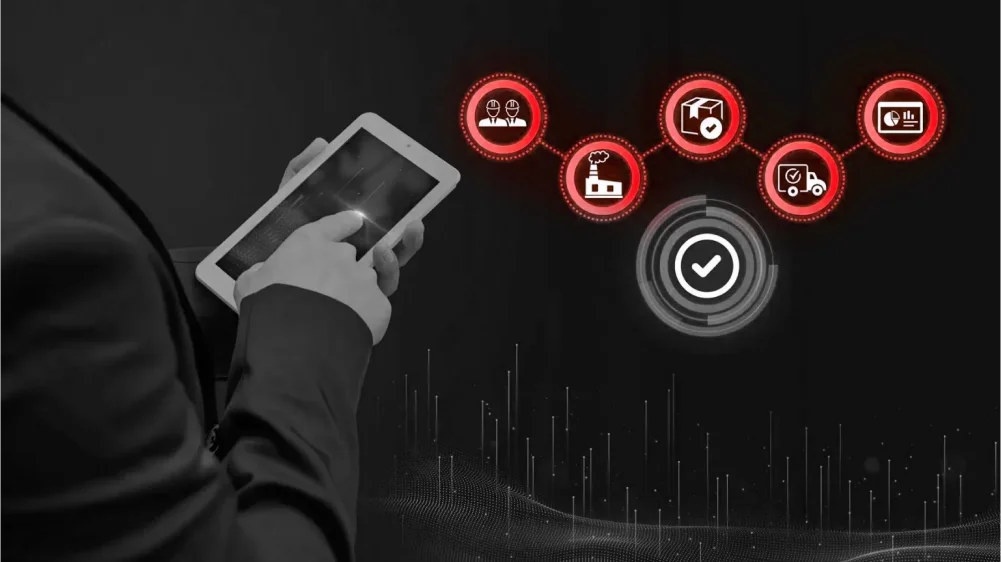
AdTech Ecosystem: What is it, How Does It Work, and What are the Best Tools?

Content Map
More chaptersThe AdTech ecosystem has changed a lot over the past two decades. Long gone are the days when print publishers and advertisers negotiate contracts over the table.
Today, online publishers and advertisers use various tools and technologies to facilitate the buying, selling, and managing of targeted advertising campaigns across websites, social media, and mobile platforms.
In this article, you will learn about the AdTech ecosystem, including how it works and the best tools to use.
Key Takeaways:
- The AdTech ecosystem describes the various tools that advertisers, publishers, and agencies use to execute digital marketing campaigns.
- Media agencies and advertising networks help bring publishers and advertisers together, streamlining the ad buying and selling process.
- Lotame, Xandr, and Display & Video 360 are some of the most popular AdTech tools being used today.
What Is the AdTech Ecosystem?

The term AdTech stands for Advertising Technology. It describes the various software tools publishers and advertisers use to buy, sell, and manage online advertisements. It also describes the broader AdTech ecosystem that encompasses other activities such as market research, bidding, revenue management, and different types of data analysis.
In an AdTech ecosystem, publishers and advertisers use technology to achieve their digital marketing goals.
Publishers
Publishers want to create an attractive space for advertisers to promote their goods and services.
The publisher could be the owner of a website or an application with a dedicated user base. They aim to manage the display of online advertisements on their platform and do so in a way that aligns with their unique User Interface (UI).
Advertisers
Advertisers, on the other hand, want to deliver the right advertisements to the right people at the right time.
They use AdTech to narrow down viable publishers, bid on ad placements, monitor visitor impressions, and evaluate customer acquisition costs. Advertisers can even automate the ad-buying process through algorithms.
Who Are the Key Players in the AdTech Ecosystem?

There are many key players in the AdTech ecosystem. These go beyond just publishers and advertisers but also media agencies and advertising networks. Let’s look at who these players are and what they do.
Media Agencies
Media agencies advise companies on where and how to advertise their products and services. They do this by allocating advertising resources and expenditures across multiple channels. Traditionally, media agencies are not responsible for creating ads but merely their placements.
Advertising Networks
Ad networks manage the relationship between publishers and advertisers. They manage the ad inventory of multiple publishers and offer those spaces to suitable advertisers. In doing so, ad networks help publishers acquire more business, and they help advertisers reach a wider audience.
What Are the Main Types of AdTech Platforms?

Companies can access and use various tools and software to manage their digital marketing campaigns. The tools each company uses and how they use them depend on their goals. These tools can help companies achieve various outcomes, such as harnessing the benefits of big data analytics by collecting higher-quality data to make informed decisions.
Publishers use supply-side platforms (SSPs) to manage and sell their ad inventory, and advertisers use customer data platforms (CDPs) to consolidate user data from multiple sources.
Let’s take a closer look at the main AdTech services that are in use today.
Demand-Side Platform (DSP)
Demand-side platforms enable advertisers to buy advertisement inventory space from publishers. With a DSP, advertisers bid on open ad slots and the sale of those slots occurs in real-time through an automated system.
Advertisers can use DSPs to manage all their ad inventory in one place. They can buy and manage banner ads for apps, mobile ads, and social media ads on the same login. Advertisers can personalize their ad bids based on budget, demographics, geography, and more.
Supply-Side Platform (SSP)
A supply-side platform enables publishers to sell their ad inventory. Publishers can list their ad inventory on multiple exchanges, increasing their outreach to advertisers.
With an SSP, publishers can list available ad space for search, display, native, and video ads. This means they can manage their entire ad inventory in one place. Publishers can also specify their target audience and asking price. This makes it easier for the SSP to recommend suitable ad inventory to the right advertisers.
Agency Trading Desk (ATD)
An agency trading desk is a technology or service that ad agencies provide to companies. It is a set of tools that media agencies use to plan, buy, and manage advertising campaigns.
Advertisers benefit from agency trading desks as they can buy advertising space at a lower cost than hiring in-house campaign managers.
Data Management Platform (DMP)
A data management platform collects customer data from multiple sources. These sources include websites, social media networks, mobile apps, customer relationship management (CRM) software, and many more.
The DMP then consolidates big data and, using big data analytics and AI/ML technology, identifies trends and consumer behavior. It also helps users create unique target segments and customer profiles.
Advertisement Exchange
Ad exchanges are digital marketplaces in which advertisers and publishers trade (buy and sell) ad inventory in real time. The purchase process takes place through a real-time bidding process. Here, the price of ad inventory depends on the supply and demand of a certain ad slot.
Publishers list their available ad spaces. They include details about their user base (target audience) and asking price. Advertisers then bid on their desired ad spaces. The ad exchange then rewards the ad space to the highest bidder.
How Do the Different AdTech Tools Work Together?

Before the advent of AdTech, publishers and advertisers would use direct channels to connect.
Under this arrangement, publishers would sell their ad inventory to advertisers directly. Unfortunately, this approach was time-consuming and made it harder for smaller publishers to scale.
Fast forward to today, and things are different. Publishers and advertisers use ad servers and ad exchanges – online marketplaces – to buy and sell available ad inventory. Publishers use SSPs to sell ads, and advertisers use DSPs to buy ads.
To provide the best user experience for advertisers and publishers, SSPs and DSPs collect first- and third-party data from DMPs. Then, the platforms use AI/ML techniques to analyze the data, identifying trends and patterns to help stakeholders make informed decisions. This way, advertisers can display their ads in places where the audience reception is most likely to be high.
What Are the Most Popular AdTech Tools in Use Today?
There are many AdTech vendors out there today. These companies provide software that helps advertisers, publishers, and agencies manage the programmatic ad buying and selling process. These tools also help automate time-consuming processes such as ad bidding, ad placement, ad revenue, and optimizing, as well as data collecting and reporting.
Here are some of the most popular Ad Tech tools you can use today.
Lotame
Lotame is one data management platform that helps companies grow and innovate with their data. As the role of data science in digital marketing becomes more important, tools like Lotame have grown in popularity due to their all-in-one data collaboration solutions.
The Spherical Platform has powerful tools to consolidate known and unknown first-party data into segmented target audiences, enabling media owners and digital marketers to deliver more personalized multi-channel messages.
Lotame also uses Panorama Identity to create unique customer profiles without relying on cookies, allowing advertisers to execute multi-channel ad campaigns to target audience while respecting consumer’s privacy preferences.
Xandr
Previously called AppNexus before operating under AT&T’s digital advertising division, Xandr was bought by Microsoft in 2021.
Xandr uses data-enabled technology to facilitate the buying, selling, and curating of advertising content. It complements Microsoft’s existing online advertising offerings, accelerating the delivery of premium advertising and retail media solutions on a scalable, data-driven platform.
Xandr has dedicated modules for investing, monetizing, and curating digital ad campaigns. Advertisers, publishers, and agencies can manage traditional online ad spend and real-time bidding in one place, consolidating all data and workflows into the same platform.
Display & Video 360
Display & Video 360 is an end-to-end digital campaign management platform by Google. It allows teams to manage every aspect of their marketing campaigns, from sharing campaign data and insights across departments to identifying and buying inventory from publishers and media companies.
The Audience module lets teams learn about their audiences from first- and third-party data collected by Google. Teams can then segment audiences into categories and set ad frequency caps to avoid oversaturating consumers.
Another notable module is the Insights service. By consolidating all marketing metrics and data into one place, teams can generate and share instant reports with stakeholders. Reports can also be turned into smart data visualizations, including charts and graphs, simplifying complex data and pattern recognition.
Manage Your AdTech Ecosystem with Orient Software
The ad tech industry is constantly evolving, introducing new challenges and opportunities. Regulators are reducing the effectiveness of third-party cookies, forcing marketers to use cookieless tracking to gather and act ethically on customer data.
On the other hand, the rise of connected TVs – televisions that are capable of connecting to the internet and stream live content – allows companies to deliver targeted advertising to consumers from the comfort of their couch.
Empower Your Data Through Orient Software
Orient Software’s data science services help businesses harness the full potential of their data to make more informed decisions. We partner closely with you and your team to understand your needs and challenges and propose a custom-made solution that aligns with your goals.
Our data analytics and data visualization services provide the personalized guide you need to make informed decisions with your data, while our data engineering services build a scalable and reliable data infrastructure tailored to your needs.
Contact us to see how we can convert your valuable data into action.






